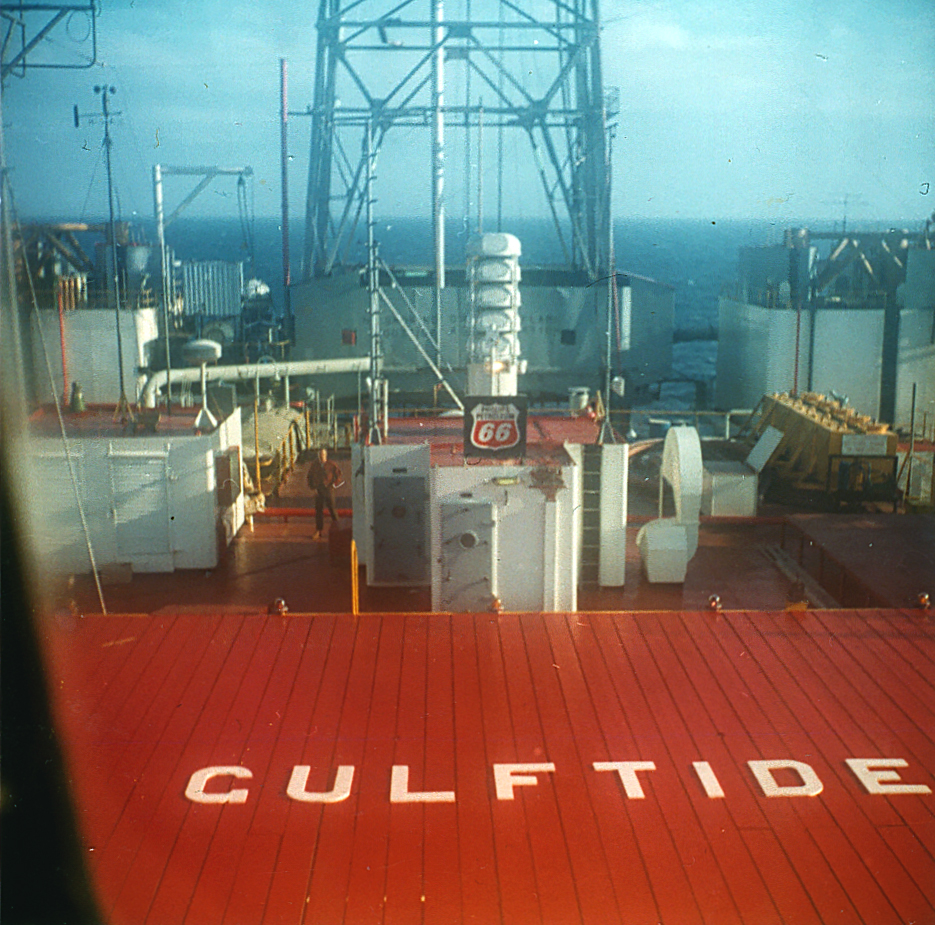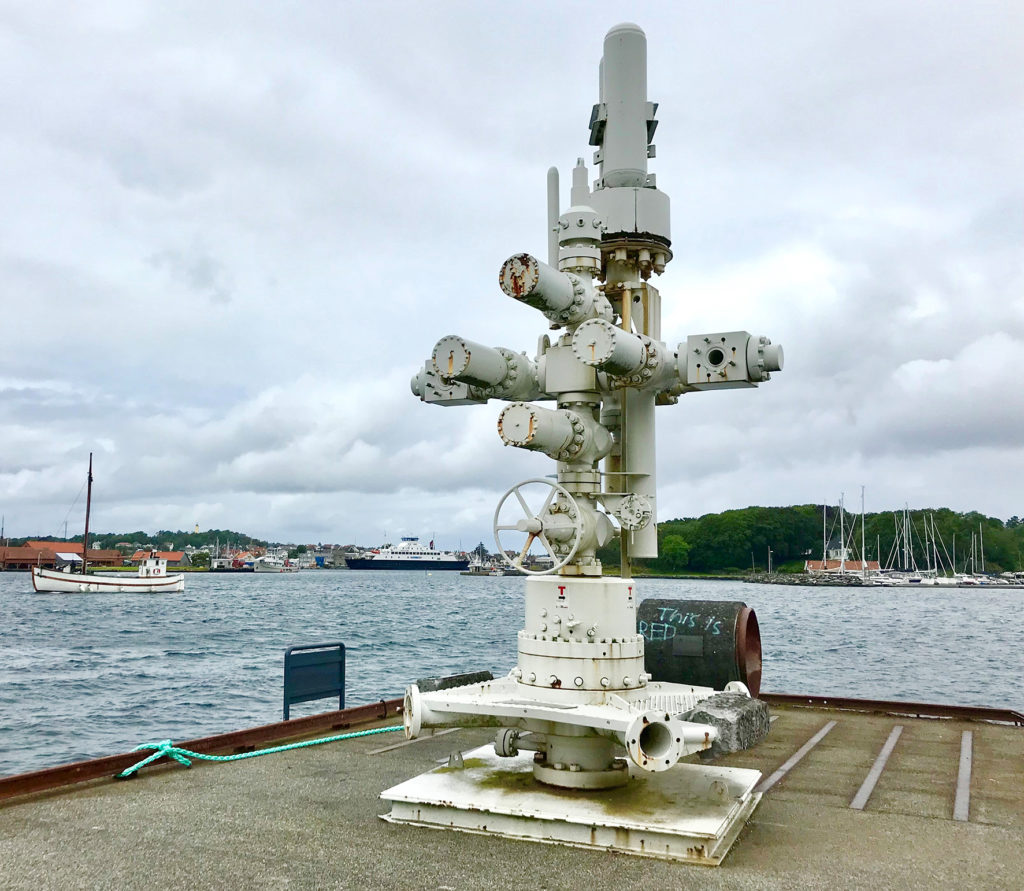The first four subsea wells

 arbeidsliv, gulftide, pionerkultur, arbeid, dekk, Norges første havbunnsbrønner, historie, 1971,
arbeidsliv, gulftide, pionerkultur, arbeid, dekk, Norges første havbunnsbrønner, historie, 1971,The operator, Phillips Petroleum Company Norway, applied for permission to start test production in June 1971 from the Gulftide jackup. Originally a drilling rig, it would produce from the first four wildcat (discovery) and appraisal wells on the field, where massive resources had been already proven. Ocean Viking was chartered in the spring of 1971 to re-open the four wells so that they could be completed for production.
Diving work required for this job was done by French company Comex. This was by no means hazard-free at the time, and the haste to get Ekofisk on stream contributed to a tragic fatality in March 1971 – the second fatal diving accident on the NCS.[REMOVE]Fotnote: Gjerde, Kristin Øye and Ryggvik, Helge, On the edge, under water. Offshore diving in Norway, 2009: 36.
 første undervannsbrønner,
første undervannsbrønner,The work nevertheless progressed. Four US-made hydraulically operated Xmas trees were placed on the seabed around Gulftide as the first subsea installations on the NCS. This was a milestone in technical terms – subsea trees had not been used before in such a rough-weather area and in the water depths found on Ekofisk.
These units were “dry” trees which had been “marinised” – modified so that they could cope with seabed conditions, including the ambient pressure and the corrosive environment. Their dependence on diver assistance is clearly demonstrated by the fact that the lower master valve had a wheel for manual operation.
Production flowlines and control cables were laid from each of the wells, with the wellstream carried up to Gulftide through risers. Oil, gas and water were separated on the rig deck, with gas burnt off in the flare, water returned to the sea and oil sent on through flowlines to two loading buoys where tankers could moor to take on the oil.
Giant US engineering company Brown & Root was contracted to install Gulftide and lay the flowlines between the four wells and the risers to the platform.
 Norges første havbunnsbrønner, historie, 1971,
Norges første havbunnsbrønner, historie, 1971,Taylor Diving & Salvage Company did the diving work when Gulftide was installed. It shipped two saturation diving spreads to the Ekofisk project, one placed on a construction barge and the other on the rig. These were the first systems of their kind in the Norwegian North Sea.
While Taylor hooked up the first well, the other three were handled by divers from Ocean Systems. Phillips required that the latter company also had a saturation system in reserve, but that was not done. Ocean Systems preferred to let its divers use the well-tested but heavy helmet diving equipment. It did not even use a bell to descend. Such units could not cope with much in the way of waves, but these were not a problem for helmet divers once they reached a suitable depth.[REMOVE]Fotnote: Swann, Christopher, The History of Oilfield Diving. An Industrial Adventure, 2007: 363-369. The work was arduous, and a lot of adjustments were needed to ensure that the planned results were achieved. Mechanical connections were used. Some had small O-rings, while others were so large that crane support was needed. The final well was completed in five days, which Phillips was well satisfied with.[REMOVE]Fotnote: Gjerde, Kristin Øye and Ryggvik, Helge, On the edge, under water. Offshore diving in Norway, 2009: 36-38.
Gulftide was officially inaugurated by Norwegian prime minister Trygve Bratteli on 9 June 1971, but production did not actually begin until 8 July and then from only one well. A second came on stream in September, the third was ready the following month and all four were in operation by February 1972. They produced 10 000 barrels of oil per day, which was considered extremely good.
The next subsea installation on the Norwegian continental shelf came in 1983 on North-East Frigg, where French operator Elf installed a six-well well frame. This pioneering project paved the way for the use of subsea technology on the Norwegian continental shelf.
The learning curve in this area has been steep – and from being an importer of subsea equipment to the Ekofisk field in 1971, Norway has become a world-leading exporter of underwater technology. In 2019, subsea wells account for about half of the production on the Norwegian continental shelf.
Norwegian oil production officially inauguratedFirst bridge support installed
